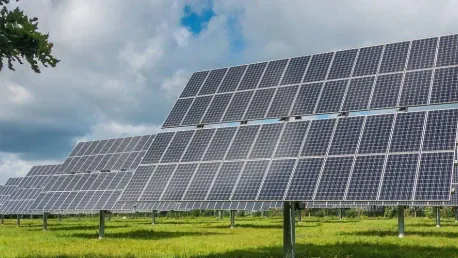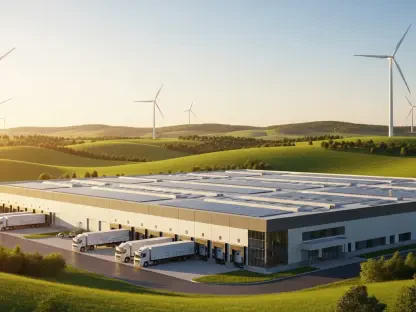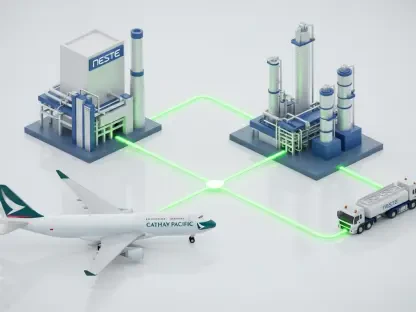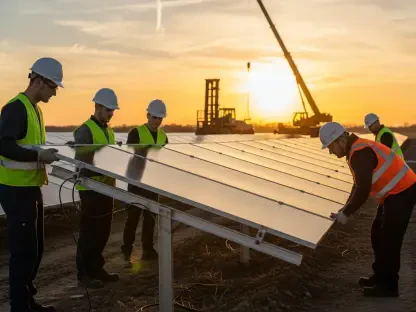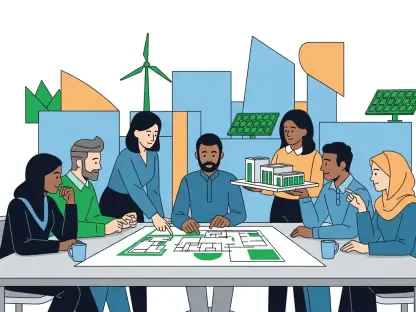The energy storage landscape is changing quickly as scientists work to create better and longer-lasting storage solutions. Experts are focused on improving smart grids to ensure that electricity systems work well and are cost-effective. Some of the most important trends include finding better alternatives to lithium-ion batteries, inventing renewable depots for broader distribution, and moving from centralized to more flexible, portable power cell solutions. These advancements are vital in industries such as manufacturing, services, renewable sources, and portable electronics. So read on and dive deep into the dynamic world of 2025 energy storage.
A Deep Dive into Decarbonization Trends and Emerging Solutions
A detailed study below presents the latest global decarbonization trends, particularly in startups, but it gives us a peek into the future of the energy consumption and conservation sector. The insights were gathered using the StartUs Insights Discovery Platform, which uses Big Data and Artificial Intelligence to analyze over 4.7 million startups and scale-ups worldwide. The study focused on 1366 global startups and scale-ups, and it resulted in valuable information on innovation for the energy industry. This research aims to assist businesses in making informed strategic decisions by offering an overview of emerging technologies and trends.
How Industry Trends Shape Electricity Retention Technologies
Companies and research institutions are working on improving lithium battery chemistries and exploring alternatives to better manage the high grid demand. To meet this demand, utility-scale and distributed power-storing solutions are being developed.
The electric vehicle (EV) and electronics industry require fast charging and short-duration storage (SDES) devices. With lithium batteries facing challenges related to recyclability and rechargeability, redox and solid-state alternatives are becoming more popular. Innovative thermal and hydrogen technologies are also helping to lower the carbon footprint of the sector.
Meanwhile, industrial consumers are adopting energy storage as a service to integrate renewable sources and meet their demands.
Energy Storage Trends & Innovations | Impact in 2025 (%) |
Advanced Lithium-Ion Batteries | 18% |
Lithium Alternatives | 14% |
Short-Term Response Energy Cache Devices | 12% |
Battery Energy Storage Systems (BESS) | 10% |
Advanced Thermal Energy Storage (TES) | 9% |
Solid-State Batteries | 8% |
Hydrogen Storage | 8% |
Enhanced Redox Flow Batteries (RFB) | 8% |
Distributed Cache Systems | 8% |
Energy Storage as a Service | 5% |
This table illustrates the most influential industry trends and their projected impact in 2025. Let’s dive into each one and their best representatives.
Top 10 Power Conserving Trends in 2025
The electricity management sector is developing cutting-edge innovations that are already shaping the future of green energy. Let’s explore the top ten trends in power accumulation that are set to make a substantial impact in the coming years.
1. Advanced Lithium-Ion Batteries
Lithium-ion cells have advantages such as portability and fast recharging, but they are flammable and sensitive to high temperatures. Startups are modifying this technology to improve performance and lifetime by using lighter and energy-dense materials and recycling used units:
Green Li-ion, a Singaporean startup, specializes in recycling lithium-ion to produce cathodes. Its modular processing plants utilize co-precipitation hydrometallurgical techniques, improving purity and shortening production time. This enables manufacturers to recycle batteries without the need for sorting.
Echion Technologies, a UK-based startup, produces lithium-ion battery anode material for super fast charging using proprietary mixed niobium oxide (XNO) technology.
2. Lithium Alternatives
Lithium cells might hit a wall due to environmental concerns and increasing demand. Leaders are exploring alternatives like zinc-air, sodium-sulfur, aluminum ion, magnesium ion, nickel-zinc, and silicon-based units for the next generation of power repositories:
Indian startup Offgrid Energy Labs develops ZincGel, a proprietary battery technology. It uses a highly conductive zinc electrolyte and carbon-based cathode, providing a safe, eco-friendly, non-flammable, and sustainable alternative to lithium-ion batteries for two-wheeler EVs.
Altris is a Swedish startup that creates Fennac, a low-cost and sustainable cathode material for sodium-ion products. It offers high performance without the use of expensive alloys or hard carbon.
3. Short-Term Response Devices
Devices like supercapacitors, flywheels, and superconducting magnetic storage, along with current battery technologies, are improving power grid reliability and electric vehicle charge-discharge cycles. Here are some startups on the leading edge:
Israeli startup EEXION’s product, Energize-N’-Go, uses supercapacitors to accumulate electricity. It offers faster charging than rechargeable batteries, is recyclable, and is suitable for electric mobility applications.
GODI is an Indian startup that manufactures biowaste-derived hybrid capacitor material. The startup’s capacitor combines activated carbon and graphene, delivering short-term peak current for fast charging. It has applications in automotive, renewable energy, and regenerative braking.
4. Battery Backups
Renewable energy technologies are efficient and economical but highly intermittent. To fill in availability gaps, complementary long-duration power-storing solutions are missing from the equation. That’s where visionary startups come into play once again:
Albion Technologies, a startup based in the UK, offers Smart BESS, a containerized battery accumulation framework. Smart BESS extends battery life, provides over 90% usable energy, and meets UK national grid standards (G99). It stores clean energy from renewables, reducing CO2 emissions and oil consumption.
Genista Energy is a UK-based startup that makes a large container with multiple battery strings. This system uses lithium-iron-phosphate and provides electricity to industrial and commercial buildings. It helps manage renewable energy and offers an alternative to diesel generators.
5. Advanced Thermal Energy Depots
Thermal “reservoirs” are common in solar thermal systems to access stored solar power at night and manage peaks in district heating and cooling. Storing heat balances variable renewable electricity production by saving heat in a cache framework for later use. Some of the startups on this list employ materials like molten salts and phase-changing materials in their production line:
Hungarian startup HeatVentors specializes in phase-changing material-based thermal energy accumulation. The company’s product, HeatTank, utilizes phase change materials to store thermal energy, improving HVAC efficiency for companies.
Cowa Thermal Solutions, a Swiss startup, produces capsule-filled heat tanks for the thermal principle. Their booster capsules use natural salts and offer three times the capacity of regular water tanks without compromising stability. When paired with photovoltaic structures, these tanks deliver energy-dense and continuous heating.
6. Enhanced Redox Flow Batteries
Redox flow cells use two interconnected tanks with electrolyte liquids and oppositely charged electrodes. They offer longer lifespans than lithium units and are great for utility-scale integration of renewable energy. Here are two trailblazers in the sector:
XL Batteries, a US-based startup, offers saltwater-based non-corrosive flow technology. They found that using organic molecules from inexpensive industrial feedstock provides an affordable alternative to high-end lithium-ion units.
StorEn Technologies is another American startup specializing in vanadium flow batteries that overcome the issues of decay and capacity loss found in their lithium counterparts. Their products are useful for many different purposes, such as providing power for telecom towers in remote areas.
7. Distributed Storage
During times of high demand, typical grids often risk failure. Distributed storage systems address this by allowing individual facilities to produce and retain energy on-site. The startups who provide these services sell the excess energy to the grid and help reduce reliance on traditional energy generation sources. Here are the two most prominent names:
Belgian startup MET3R uses AI to optimize fleet charging, reduce grid pressure, and provide insights on managing loads related to EV charging. Energy companies use the platform to monitor energy assets on low-voltage networks.
Karit, an Australian startup, offers virtual power plants (VPPs) that allow energy retailers to efficiently deliver electricity to customers and sell all the surplus in the market.
8. Solid-State Batteries
Solid-state cells replace flammable liquid electrolytes with a solid compound for ion migration. They are infused with polymers and organic compounds for high conductivity. They support high-voltage materials and can have greater energy density, portability, and shelf life–making them ideal for electric vehicles. Some of the most prominent producers are:
SSB Incorporated is a US-based startup that produces polymer-based solid-state electrolyte material. It can be used in lithium units and larger applications like vehicles or planes.
Theion is a German enterprise developing solid-state crystal sulfur batteries using direct crystal imprinting (DCi) to create wafers from molten sulfur. They use a special solid material to conduct electricity in these wafers, with lithium metal foil as a part of it. The technology offers long cycle life, fast charging, low cell cost, and safety, and can be used in various applications.
9. Hydrogen Storage
Hydrogen is a very efficient and environmentally friendly fuel. It can be stored as a gas or liquid, each with its own requirements. Startups are working on new ways to store hydrogen economically, which has uses in clean fuel for cars and portable electricity supply for buildings. Some of the most innovative startups in this field are:
GRZ Technologies manufactures solid-state hydrogen containers in atomic form. It “sits” in a metallic structure for safety, high density, and a longer lifetime. Standardized stacks provide the right amount of power for both stationary and portable use in the transportation industry.
Hydrogen First is a Polish firm that designs flat composite containers for storing compressed hydrogen. They are actively reducing weight and cost for the aerospace and automotive industries that need various hydrogen depots.
10. Energy Storage as a Service (ESaaS)
The ESaaS system is a reliable power supply without the need for heavy investments, featuring low setup costs and greater flexibility. Companies providing the service help manage congestion, peak demand, and grid failures while supporting consumers in remote locations with increased grid resilience and efficiency:
Hybrid Greentech offers HERA, an AI-based management platform for energy solutions. It combines long-term optimization models with short-term machine learning to find the best ways to operate energy repositories. This technology is used in areas like hybrid power plants, microgrids, and electric mobility for smart energy management.
Renon India is an Indian startup that develops ARK, a smart battery management system. It performs passive cell balancing by measuring voltage and temperature, ensuring the functional safety, efficiency, and performance of battery packs. The ARK is suitable for commercial and industrial applications storing solar energy.
Wrapping It Up
As we look toward the future of energy management, the need for enhanced grid flexibility is clearer than ever. Cities must connect different parts of the energy system, like electricity and heating, to perfect a more efficient system. Staying up to date with the industry’s trends will help businesses and communities make smarter choices. If we, as a society, stay open to new ideas and work together, we can foster and nurture the sustainable future we dream of. The list of startups above just goes to show that there are lots of exciting possibilities ahead as we change how we make, use, and manage energy.
